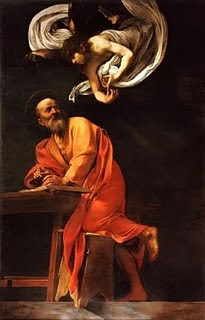“All roads indeed lead to Rome, but theirs also is a more mystical destination, some bourne of which no traveller knows the name,
some city, they all seem to hint, even more eternal.” - Richard Le Gallienne
Rome, Italy - the ‘Eternal City’. Where ancient relics, ghostly hauntings of Emperor’s and Popes, and modern technology collide. Where any given day you can walk by the Colosseo and think nothing of it, or, you can run a race around Circo Massimo because it only makes sense.
I don’t know if there is any place on earth quite as magical as this city; to me, it seems everywhere you go, everywhere you look, there is a story - a deep, meaningful history to every building, every painting, every piazza.
Simply enchanting. Simply breathtaking.
Sunday morning, we took a trip into Rome to view some of the artwork by the famous painter, Michelangelo Merisi da Caravaggio (or simply, Caravaggio).
Caravaggio was an Italian artist who’s work has become some of the most talked-about and influential art in the world. He was commissioned by the Pope during the Counter-Reformation.
I won’t lie, it’s hard for me to truly have a deep appreciation for art, since I have no clear understanding of the work and symbolism involved.
BUT, Caravaggio was controversial. And that, I love.
His work was controversial as his depictions of Saints strongly differed from any artist at that time. For example, his depiction of Mary wearing a red cloak. To us, nothing is unordinary about that, but at that time red was the color of sex; prostitution, promiscuous activity, etc.
And who doesn’t love controversy about sex and the church, right??
Below is Caravaggio's Madonna of the Pilgrims, made between 1603 and 1606. Displayed in the Church of St. Augustine, a stone’s throw away from Piazza Navona. One of Carvaggio’s most controversial as Mary is depicted barefoot and in a red cloak.
 |



No comments:
Post a Comment